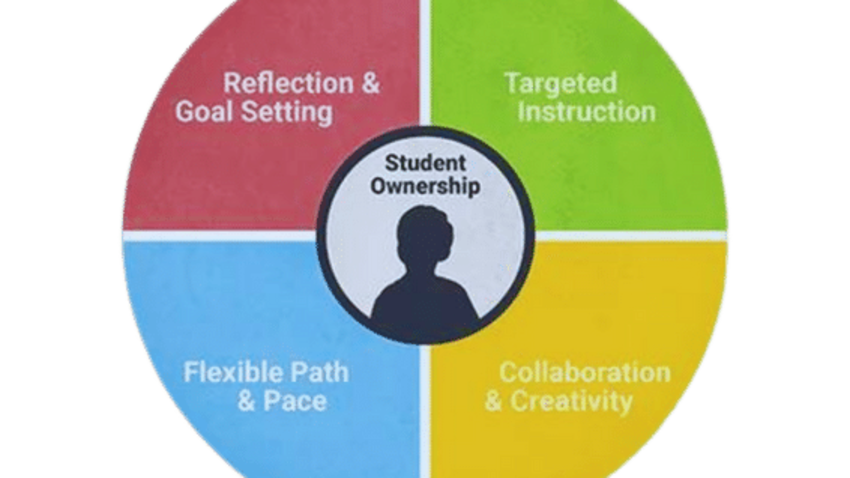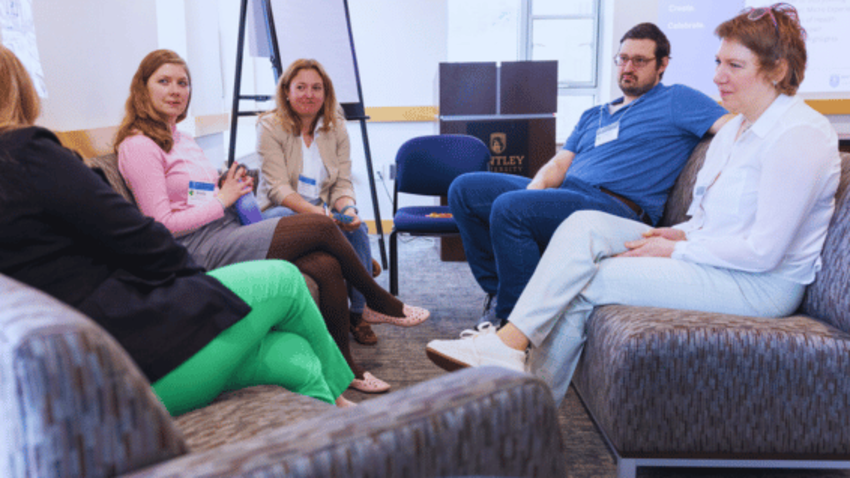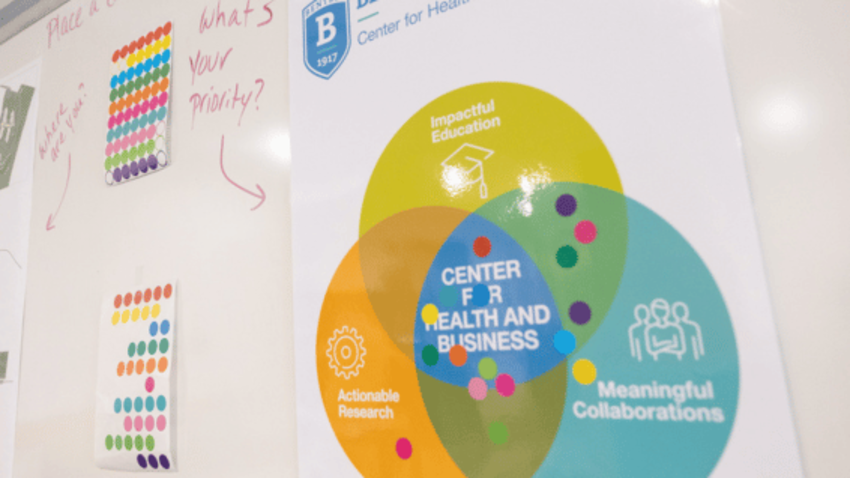Teaching Approaches
 Discover a curated collection of resources spanning key pedagogical strategies. Whether you're seeking evidence-based practices to invigorate your classroom, exploring the latest advancements in educational research, or searching for practical solutions to common challenges, our library aims to empower you with the tools necessary to continue excelling in your role.
Discover a curated collection of resources spanning key pedagogical strategies. Whether you're seeking evidence-based practices to invigorate your classroom, exploring the latest advancements in educational research, or searching for practical solutions to common challenges, our library aims to empower you with the tools necessary to continue excelling in your role.
Have a resource you want to share with colleagues? We’d love to add it to our collection! Submit here. As always, we welcome you to the Badavas Center to ideate together!
Personalized & Adaptive Learning
Interested in fitting the needs of each student? Come to the Badavas Center to discuss personalized and adaptive learning approaches in your classroom. In addition, our dedicated resource page offers a curated selection of innovative tools and methodologies designed to empower educators in tailoring the learning experience to individual preferences, abilities, and pace. Personalized learning encompasses the customization of content, pace, and learning path to suit each student's needs, interests, and learning style, fostering deeper engagement and understanding. Meanwhile, adaptive learning utilizes technology and data-driven insights to dynamically adjust instructional content and delivery based on real-time student performance, ensuring optimal challenge and support for every learner. Together, these approaches revolutionize higher education by placing students at the center of their learning journey, promoting autonomy, mastery, and ultimately, academic success.
Personalised learning in higher education: laying the foundations
Personalized learning aims to empower students by allowing them to take ownership of their learning process, encouraging self-direction, and fostering deeper engagement with the material.
What Is Adaptive Learning and How Can You Get Started With It?
Learn More
The Transformative Power Of Adaptive Learning In Higher Education
Higher education offers students many opportunities to advance their careers and develop deep critical thinking skills.
Learning Technology Models that Support Personalization within Blended Learning Environments in Higher Education
Personalized learning has the potential to transfer the focus of higher education from teacher-centered to learner-centered environments.
5 Personalized Learning Strategies for the Online Learner
Over the years, the need for learning to become more student-centered as opposed to teacher-centered has changed the scenery of teaching and learning.
Self-Regulation of Learning and the Co-Design of Personalized Learning Pathways in Higher Education: A Theoretical Model Approach
The way we learn is changing, and this requires seeking learner-centred pedagogical strategies.
Community & Collaboration
We love supporting faculty in their strategic approaches to community building and collaboration. By fostering a sense of belonging and shared purpose, students are empowered to engage more deeply with their peers, their teachers, and the subject matter itself. Innovative approaches to building community enhance social connections and promote critical skills like communication, empathy, and teamwork. Whether through project and problem-based learning, cooperative group activities, or digital platforms for collaborative work, students are encouraged to explore diverse perspectives and collectively tackle complex challenges. Moreover, a strong classroom community serves as a foundation for cultivating creativity, resilience, and a growth mindset, enabling students to thrive academically and personally as they navigate the complexities of the modern world. By prioritizing collaboration and community-building, educators not only enhance the learning experience but also equip students with the skills and mindset necessary for success beyond the classroom.
The Community of Inquiry Framework
An educational community of inquiry is a group of individuals who collaboratively engage in purposeful critical discourse and reflection to construct personal meaning and confirm mutual understanding.
Community Building in the Classroom
Community building in the classroom is about creating a space in which students and instructors are committed to a shared learning goal and achieve learning through frequent collaboration and social interaction (Adams & Wilson, 2020; Berry, 2019; McMillan & Chavis, 1986).
Mirroring Modern Learners: Moving Beyond Silos by Crafting Community-Centric Partnerships
Regardless of institutional strategic goals such as boosting enrollment, broadening diversity and equity efforts, and increasing student academic success, silos often hinder progress (EAB, 2022).
Active Learning
Want to transform the traditional lecture hall into a dynamic arena of engagement, collaboration, and discovery? Come to the Badavas Center to discuss active learning in your classes. In addition, here is a curated collection of innovative tools, methodologies, and best practices designed to invigorate the higher education classroom. From problem-based learning and flipped classrooms to peer instruction and inquiry-based projects, our repository showcases a diverse array of strategies that promote student-centered learning and foster deeper understanding. Whether you're exploring ways to encourage critical thinking, enhance retention, or cultivate a culture of participation, our comprehensive resources provide inspiration and guidance to elevate your teaching practice.
Empowering Students: The 5E Model Explained
The 5E Model promotes collaborative, active learning through student engagement in problem-solving and investigation.
The Badavas Center’s Favorite Thinking Routines
Thinking routines are mental habits that help students dig into what they're learning, facilitating a deeper understanding and fostering critical thinking skills in the process.
What is Experiential Learning?
Deep learning occurs when one engages deliberately with all four modes of the Experiential Learning Cycle.

Play in Higher Education
Play-based learning theory asserts that students learn best through hands-on, enjoyable activities where they explore, experiment, and interact with their environment, fostering cognitive, social, and emotional development.
Active Learning Continuum
The 10 Commandments of Experiential Learning
See here key foundational elements that must be present for learning to be labeled as experiential.
Practice, Apply, Access
Looking for resources on experiential learning in college classes? We’d love for you to visit us in the Badavas Center! In addition, this collection is tailored to equip faculty members with the tools and insights needed to integrate experiential learning into their curriculum effectively. From immersive case studies and community engagement projects to simulation exercises and problem-based opportunities, our curated selection encompasses a diverse array of experiential learning methodologies to help students practice and apply content. Whether you're a seasoned practitioner seeking fresh inspiration or a novice eager to explore innovative pedagogical approaches, our repository may help in fostering deeper engagement, critical thinking, and real-world skill development among students. Experiential learning can also be a method to build impactful assessments, inspiring learners to synthesize, curate, and demonstrate knowledge.
Design Thinking
By incorporating design thinking into student projects, educators empower learners to tackle real-world challenges with empathy and iterative problem-solving methods.
Assessment in Higher Education
The Badavas Center’s Favorite Thinking Routines
Thinking routines are mental habits that help students dig into what they're learning, facilitating a deeper understanding and fostering critical thinking skills in the process.
Reflection
Reflection plays a pivotal role in the classroom and the broader learning process, serving as a bridge between experience and understanding. It allows students to pause, analyze, and internalize their experiences, fostering deeper comprehension and critical thinking. By encouraging reflection, educators empower students to make connections between theory and practice, identify areas for growth, and develop metacognitive skills that are essential for lifelong learning. There are multiple ways to integrate reflective practice into your teaching. See examples here and visit us in the Badavas Center to ideate more.
Self-Regulated Learning
In higher education, the spectrum of learning encompasses not only formal programs but also informal experiences. Informal learning permeates our daily lives, whether through conversations, media, or actions, yielding new insights incidentally.
How Learning Works
Extending the conceptualisation of reflection: making meaning from experience over time
This article presents a conceptualization of reflection as a process of meaning-making from experience over time.

























